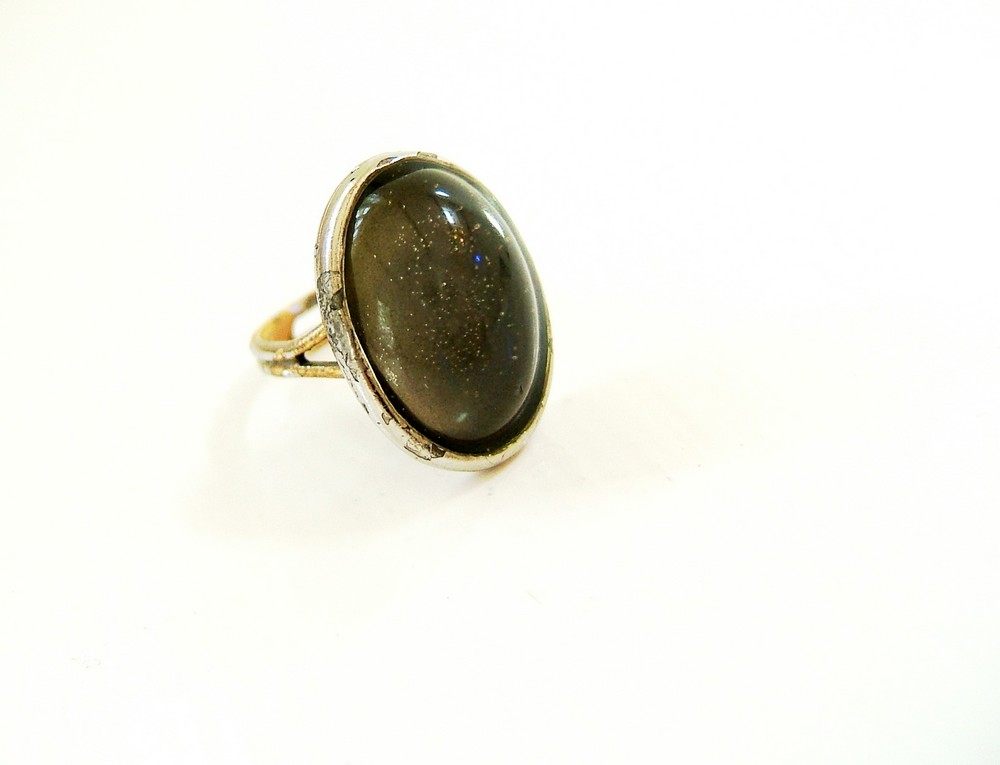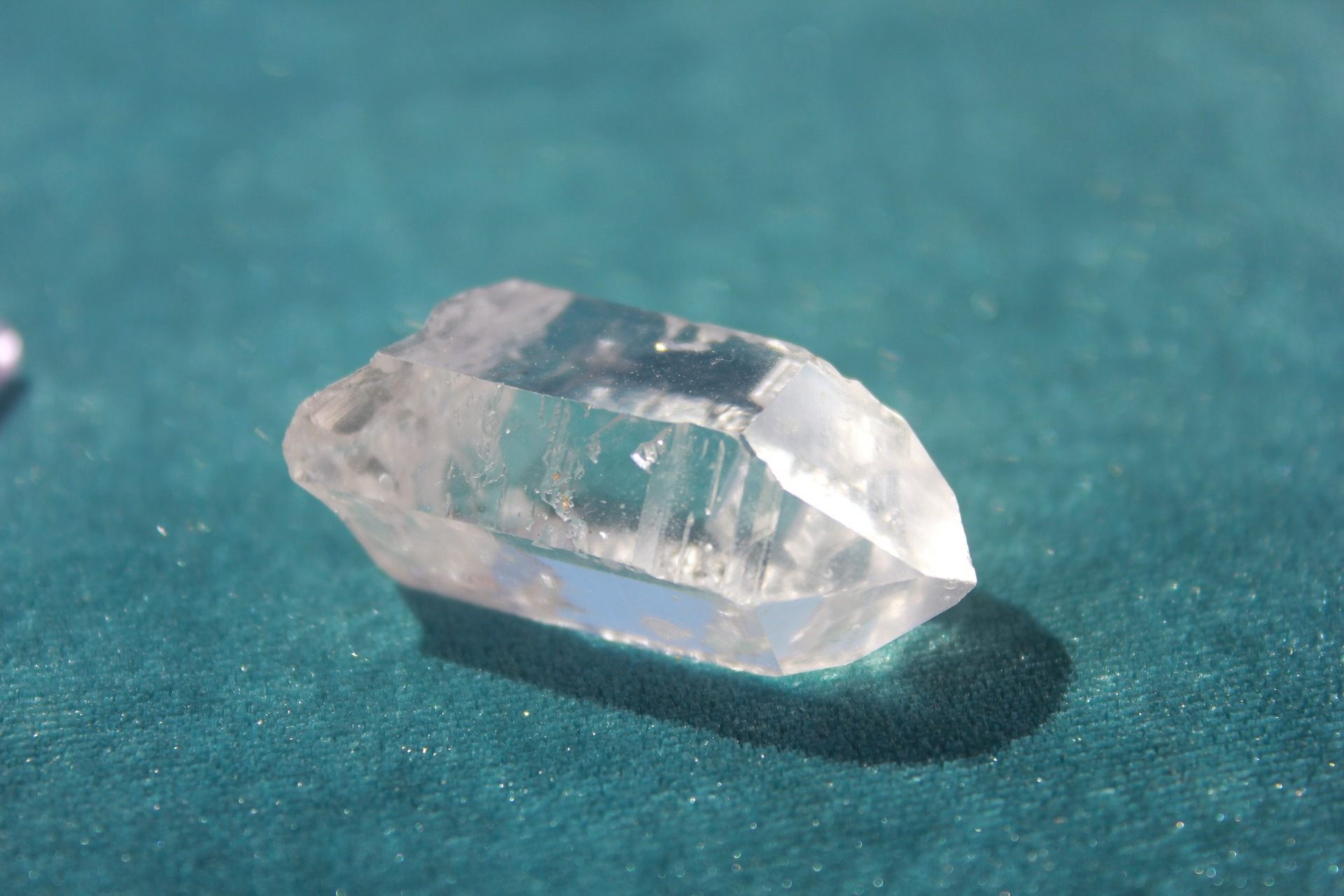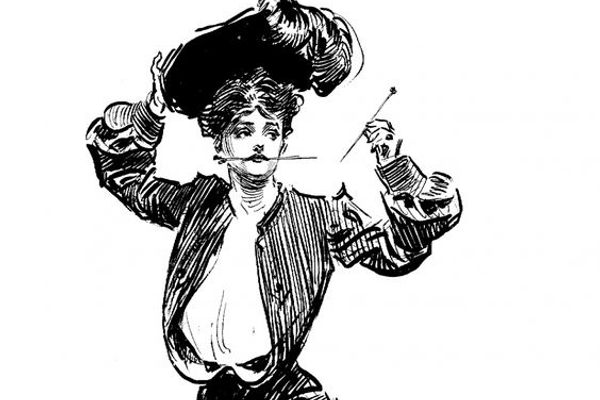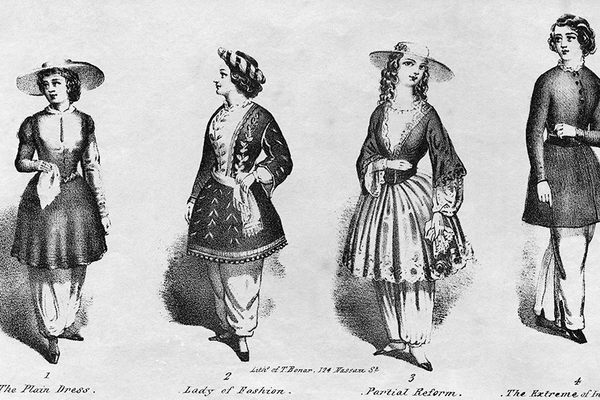Was The Mood Ring A Gateway Drug To An Era Of Self-Obsession?

Confused? Aroused? Depressed? Your mood ring will tell you—and the rest of us, too! (Photo: Shannon West/Shutterstock.com)
Before Facebook status updates and 24/7 Tweeting, people needed a way to broadcast their feelings to the rest of the world. Thankfully, despite the lack of social media, there was a way to convey this information: the mood ring.
If you’ve never worn a mood ring, you’re probably aware of the concept: put on the ring and it will change color based on shifts in your emotional state. Each color corresponds to a type of feeling, for example, blue indicates calm and purple reflects sensuality, while black denotes stress or depression.
The mood ring first appeared in the super-groovy 1970s. The masterminds behind this first form of mood jewelry were two New Yorkers named Joshua Reynolds and Maris Ambats. According to the Chicago Tribune, Reynolds was stuck in a stressful Wall Street job when he began studying biofeedback. He then devised the ring as a measure to gauge individuals’ emotions to help them meditate and control their anxieties.
One source also cites jeweler Marvin Wernick as the main mood ring man, coming up with the idea in 1975 after seeing a physician friend apply thermotropic tape to a kid’s forehead to measure temperature. Whatever the case, the only patent for the product seems to be to a Chinese inventor in 1997 (“Finger ring for sensing finger temperature to relax feelings”). None of these pioneers were able to capitalize on the mood ring’s wild though short-lived popularity.

Quartz is a key component in many mood rings. (Photo: Somor/Pixabay)
When the mood ring hit the market in 1975, 40 million rings sold in just three months, coming to a total of $20 million in sales in its first year. Mood rings quickly expanded into other mood jewelry, also referred to as “bio mood” and “truth” jewelry, such as pendants, chokers, and bracelets. Jennifer Moore, author of Fashion Fads though American History, writes that mood rings seemed to fit into the general mood of the 1970s, an era, according to historians, characterized by greater self-awareness and self-involvement. Author Tom Wolfe labeled it the “Me Decade.”
Mood rings were mostly cheap, one-size-fits-all items, but their popularity kindled interest in higher end models. Joe Murawski, owner of Joden Antique, Estate & Modern Jewelry, started his business in 1970 and remembers mood rings as initially being cheap and of low quality. But, he says, they became so popular so rapidly that people started making them in precious metals—sterling silver and, occasionally, gold. Murawski remembers buying the sterling silver versions from a supplier for $25 or $30, even $50 each, which at that time he imagines would have been the equivalent of today’s $150. “The thing was very, very popular but for a very short period of time,” he says.

Black: the most ominous mood ring color indicator of them all. (Photo: Orin Zebest/flickr)
Regarding the science behind it all, the ring is based on the premise that a person’s temperature will rise or fall based on different emotions, such as happiness or fear. The stone set in the ring is a heat-sensitive cholesterol liquid crystal encased in quartz or glass designed to respond to temperature. Human body temperature is also dependent, however, on factors such as time of day, physical exercise, food consumption, and changes in hormones. It’s likely that mood rings were more sensitive to outside elements and exterior temperatures than interior ones. Taking one off, sitting on it, or running it under hot and cold water would change the ring’s color far more effectively than shifting moods would. It was all a matter of thermal, rather than emotional, sensitivity.
While the fad’s real heyday was in 1975 and 1976, mood rings experienced a resurgence 15 years later. A 1991 Chicago Tribune article titled, “Hey, These Rings Are, Like, Groovy!” reported “mood rings are back.” Noticing people’s interest in one of their vintage mood rings, a pair of young women launched a business and sold 100,000 rings in less than three months, with buyers like Disney World lining up for more. That same spring, Hypercolor started coming out with clothing “guaranteed to tell the world your mood-of-the-moment by changing colors.” The company sold $50 million worth of product in three months.
Mood rings and color-changing clothing are still out there. In 2004, a woman patented a mood collar for pets intended to improve their emotional health (now available for $34.10), and in 2014, a designer came out with the Mood Sweater which uses galvanic skin response to promote “extimacy,” or externalized intimacy, via LED lights. And at the 2016 Grammy Awards, Lady Gaga appeared to be wearing two jumbo, color-changing mood rings.
These days, the rings are marketed towards grade schoolers, who are still innocent and moody enough to believe in such magic. And while they may have morphed from novelty items to more nostalgic relics, they continue to sell. You can still find mood rings all over Etsy (in vintage sterling silver for $30), Ebay (vintage for $1), Claire’s (which also has mood nail polish), and even equestrian jewelry purveyor Horse Smarts, where you can get 36 rings for just $3.95.
As for what relevance mood rings have now, color-changing jewelry was an early harbinger of the feelings-sharing that has become so elemental to 21st-century lives. Facebook, Instagram, and Snapchat are in some ways just tricked-out mood rings for millennials, with the big difference being control over the color of your quartz.
















Follow us on Twitter to get the latest on the world's hidden wonders.
Like us on Facebook to get the latest on the world's hidden wonders.
Follow us on Twitter Like us on Facebook